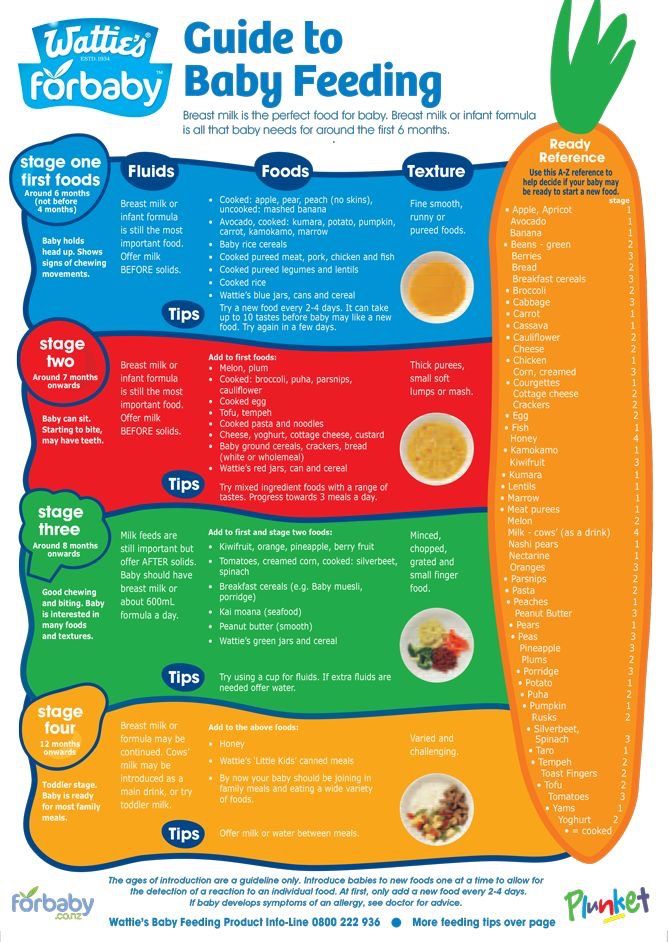Whole30 baby food
Introducing Your Child to Solid Food
The information on baby’s first foods is for educational purposes only. It is not intended nor implied to be a substitute for professional medical advice. Always consult your child’s healthcare provider to determine the appropriateness of the information for your own situation, or if you have any questions regarding your child’s healthcare plan.
The AAP recommends “breastfeeding as the sole source of nutrition for your baby for about 6 months.” Check with your child’s doctor about the recommendations for vitamin D and iron supplements during the first year. When you start introducing baby to solid foods, continue breastfeeding until at least 12 months. You can continue to breastfeed after 12 months if you and your baby desire.
By Stephanie Greunke, Dietitian
Baby’s first foods… introducing your baby to solid foods is an exciting milestone in the parenting journey (and I’m excited for you and your little one)! Once your pediatrician gives you the green light, and your baby is showing signs of readiness (usually around 6 months) you have lots of options and strategies for introducing solids, including baby-led weaning (self-feeding) or purees.
Before we begin, please know that there is not a “right way” to introduce solids. It really depends on your personal preferences, your infant’s developmental readiness and input from your pediatrician. Be patient with yourself and your little as you navigate this process, (and it IS a process).
As a parent, I have personal experience with this topic, and as a registered dietitian I’ve counseled many families as they introduce solid foods to their babies. I hear the same 6 questions about this topic over and over. I hope my answers help you work with your pediatrician to determine the methods and foods that work best for your sweet baby.
Baby’s First Foods: Which Foods Should You Introduce First?
Around six months of age, most nursing babies’ iron and zinc stores start to diminish and they need more than what can be provided through breast milk alone. This Journal of Nutrition article puts the iron and zinc needs of infants into perspective with this incredible statistic: “Infants need complementary foods with much higher nutrient density than is required for adult diets. For example, per 100 kcal of food, a breast-fed infant at 6–8 mo needs 9 times as much iron and 4 times as much zinc as an adult male.”
For example, per 100 kcal of food, a breast-fed infant at 6–8 mo needs 9 times as much iron and 4 times as much zinc as an adult male.”
This is why iron-fortified infant rice or oat cereal is often recommended as an appropriate first food. However, current recommendations suggest that foods rich in heme iron (such as meat, poultry, and fish) are an excellent choice for first foods. They contain more bioavailable sources of iron than rice cereal and provide other important nutrients such as zinc, B6, and B12.
Since your little one may not be interested in or able to consume more than a few tablespoons, you want to make each small bite worth it! You can do this by choosing the most nutrient-dense options such as meat, fish, eggs, fruit, and vegetables.
Best first foods include those rich in iron, zinc, and omega-3 including:
- High-quality liver (Very small amounts are needed.)
- Beef
- Lamb
- Bison
- Poultry
- Sardines
- Oysters
- Salmon/salmon caviar
- Eggs
If your little one isn’t interested in meat, make sure to include foods rich in vitamin C with your plant-based source of iron to boost iron absorption. For example, pair a source of non-heme iron such as cooked, dark leafy greens, legumes, or fortified bread/grains with a side of sweet potato, mango, or cooked broccoli.
For example, pair a source of non-heme iron such as cooked, dark leafy greens, legumes, or fortified bread/grains with a side of sweet potato, mango, or cooked broccoli.
With any of these options you can choose to puree them or serve them baby-led weaning style. For example: blend chicken, beef, or lamb with breast milk, water, coconut milk, or broth as a puree or simply offer soft pieces of meat or flaky salmon that’s easy to hold and chew/mash with their gums or few teeth. A great book to show you how to do this is Born To Eat.
You can also try making meatballs or slow-cooked meat for your little one to enjoy. Some little ones love to gnaw on a piece of meat on the bone, chicken thighs or drumsticks (making sure small bones are removed) to begin tasting that type of food by swallowing the juices and experimenting with different flavors. Cut the meat with the grain if serving to baby to gnaw.
Soft or cooked fruit and vegetables that are generally well-tolerated by infants include:
- Sweet potato
- Winter squash
- Carrots
- Beets
- Mango
- Papaya
- Banana
- Avocado
- Kiwi
- Plums
- Peaches
- Apricots
- Pears
If those go over well, you can advance to options a little higher in insoluble fiber such as soft or cooked:
- Broccoli
- Cauliflower
- Cooked leafy greens
- Berries
If you’d like to use purees, you can make them at home, purchase them at a grocery store, or buy them online from Serenity Kids. You’ll love their purees that include protein, veggies, and healthy fats!
You’ll love their purees that include protein, veggies, and healthy fats!
Simply mash softer foods with a fork, or use a blender/food processor to provide the texture appropriate for your baby. They’ll progress from more watery purees to thicker, chunkier purees.
If you’re doing baby-led weaning, you can offer baked, roasted, or steamed vegetables that are soft enough to mash between two fingers, served as long, holdable pieces.
Feel free to add oil and spices that your family enjoys. The goal is to introduce baby to as many flavors as possible during the first two years to increase the likelihood that they’ll enjoy them throughout their life. This may be a good opportunity to expand your palate and variety as an adult too! Next time you’re at the grocery store, pick out a fruit or vegetable you’ve never tried and shared that experience with your little!
How Should I Introduce Dairy and Grains?If you’re interested in introducing dairy, organic, unsweetened, full-fat kefir and yogurt are great options. Cheese, ghee and butter are great too, just avoid full-fat cow’s milk until they’re at least 1 year old (more details on this below).
Cheese, ghee and butter are great too, just avoid full-fat cow’s milk until they’re at least 1 year old (more details on this below).
If you’re interested in introducing grains, soaked and/or sprouted grains are a great option, but just do your best with the time, resources and energy you have. Make sure you’re also offering a variety of other nutrient-dense foods along with grains. Many people I work with choose to wait until their baby is over a year to introduce grains. They focus on meat, fruits, veggies, and healthy fats first to boost the nutrient-density of their diet since they’re only able to eat small amounts of food.
Some families who personally avoid gluten and dairy in their house may decide to introduce small amounts of these foods to their baby during the first year. This is because new research is showing that early introduction of allergens might actually be protective against food allergies. This is different than what has been previously recommended, allergen avoidance during baby’s first 1-3 years.
You may wish to avoid all dairy and grains, which is okay; however, consider working with a nutritionist or dietitian trained in pediatric nutrition to make sure your little one isn’t missing out on important minerals
Are There Any Foods I Should Completely Avoid?
You’ll want to avoid cow’s milk until at least 12 months of age since early introduction may lead to iron deficiency (anemia), displace other important nutrients in the diet, and cause early cessation of nursing. Avoid honey until 12 months as honey may contain substances that can lead to infant botulism. Obvious choking hazards, such as raw nuts, should also be avoided. Ask your provider about any other foods to avoid, delay, or introduce with caution.
What About Introducing Baby to Solid Foods On a Specific Schedule?
Just like the Reintroduction period following a Whole30, experts generally recommended to “go slow” when introducing new foods. Some parents choose to give their baby one food at a time, every 3 days to more easily identify any food that may cause a reaction (such as gas, irritability, fussiness, excessive spit up, or skin irritations). Once their baby has tolerated a variety of foods and/or a few months have passed, they may choose to introduce combinations.
Once their baby has tolerated a variety of foods and/or a few months have passed, they may choose to introduce combinations.
Of course, there are no set rules. You may decide that variety is important and going too slow isn’t necessary with foods that aren’t known allergens. If you’d like to introduce combinations of foods earlier on in the process and you have the go-ahead from your pediatrician, feel free! This makes it easier for parents who choose the baby-led weaning approach to offer food from their plate, which likely includes meals made with multiple ingredients.
How Much Food Should My Baby Eat?
Don’t be surprised or feel defeated if your little one refuses solids or eats a tiny portion during the first few attempts. This is totally new for them! My first son had no hesitation and leaped right into solids, but my second son took his time and started welcoming solids into his diet after a month of attempts. Both situations are totally normal and it may take even longer than a month for them to accept! As stated brilliantly by Ellyn Satter, your job is to offer food at mealtimes. Their job to accept or decline and decide how much.
Their job to accept or decline and decide how much.
The WHO recommends that “infants start receiving complementary foods at 6 months of age in addition to breast milk, initially 2-3 times a day between 6-8 months, increasing to 3-4 times daily between 9-11 months and 12-24 months with additional nutritious snacks offered 1-2 times per day, as desired.”
You may find that more food ends up on the floor than in your baby’s stomach. Don’t worry if your little one is only taking in a few teaspoons of solid foods each day (if any!). Keep offering, stay patient, and know it will come with time. Babies are all so different when it comes to solids, so please don’t compare your baby’s intake with what you see on Instagram or with other people’s kids.
If you’re nursing, experts generally advise to offer solids after a nursing session. This will help maintain your supply and prevent meltdowns from being overly hungry. Learning how to navigate solids is hard work for a baby, so make sure they’ve got at least a little energy in their system before introducing baby to solid foods.
What About Highly Allergenic Foods?
In the past, experts have recommended not to introduce highly allergenic foods (such as eggs, peanuts, tree nuts, cow’s milk, soy, wheat, fish and shellfish) until after an infant’s first birthday. According to the American Academy of Allergy, Asthma, and Immunology, “evidence has shown that there’s no reason to delay the introduction of the highly allergenic foods beyond 4-6 months of age. In fact, delaying the introduction of these foods may increase your baby’s risk of developing allergies.”
Of course, please talk to your baby’s pediatrician before introducing these highly allergenic foods especially if your infant has a reaction to any food, allergies run in your family, or if your infant has persistent skin issues (such as moderate to severe eczema) despite treatment.
If you’re concerned about introducing allergenic foods, you can always choose to introduce them during your child’s well-visit, so you’re near a healthcare provider in case something happens. You could introduce the food to your infant right before your visit (potentially even outside the building), since you’ll likely have to wait for your appointment. This will allow extra time for you to observe your baby’s reaction and you’ll be near help.
You could introduce the food to your infant right before your visit (potentially even outside the building), since you’ll likely have to wait for your appointment. This will allow extra time for you to observe your baby’s reaction and you’ll be near help.
Note: Some of the links contained in this website are affiliate links. This means that we may receive a commission if you click on the link and make a purchase from the affiliate. We only recommend products and services that we know or trust to be of high quality, whether an affiliate relationship is in place or not.
You Might Also Like…
21 Whole30 Snacks You'll Actually Want to Eat
Whole30 is a 30-day challenge to eat whole, unprocessed, foods for a month and see how it makes you feel. These snacks meet the Whole30 guidelines—and also happen to be incredibly tasty.
Our editors and experts handpick every product we feature. We may earn a commission from your purchases.
Elena Veselova/Shutterstock
Egg and veggie muffins
Melissa Hartwig Urban is co-founder and CEO of Whole30.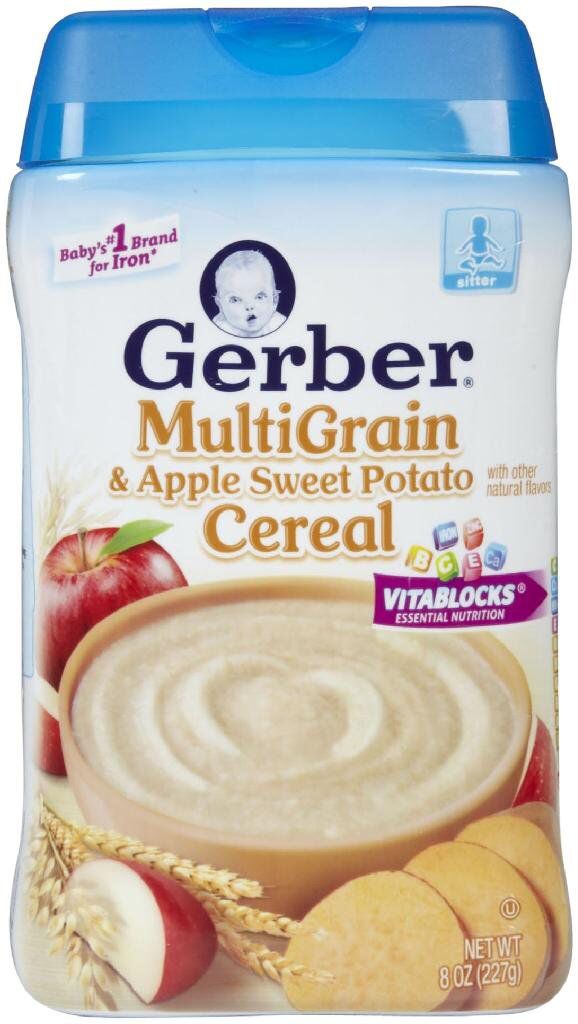 com and a leading voice in the Whole30 movement. Though Urban suggests Whole30 followers avoid snacking or grazing as a general rule, she recognizes that long workdays or erratic schedules may leave people in the lurch.”Having Whole30 snacks prepared and ready to go is a smart move,” she says. “To discern between hunger and a craving, I’ll ask myself, ‘Am I hungry enough to eat eggs?’ If the answer is no, it’s probably just a craving,” Urban says. “If it’s a yes, single-serve veggie frittata baked in muffin tins are a portable mini-meal that taste just as good cold or hot.” Is Whole30 for you? Here are 14 pros and cons of the Whole30 diet you should know before you start.
com and a leading voice in the Whole30 movement. Though Urban suggests Whole30 followers avoid snacking or grazing as a general rule, she recognizes that long workdays or erratic schedules may leave people in the lurch.”Having Whole30 snacks prepared and ready to go is a smart move,” she says. “To discern between hunger and a craving, I’ll ask myself, ‘Am I hungry enough to eat eggs?’ If the answer is no, it’s probably just a craving,” Urban says. “If it’s a yes, single-serve veggie frittata baked in muffin tins are a portable mini-meal that taste just as good cold or hot.” Is Whole30 for you? Here are 14 pros and cons of the Whole30 diet you should know before you start.
bitt24/Shutterstock
Hard-boiled eggs, raw veggies, and dip
Before you dive into a pile of nuts or slurp up a smoothie, Urban suggests you give real thought to your snack’s ingredients. “In general snacks should look like mini-meals, with protein, healthy fat, and carbs from vegetables or fruit,” she says. “I always have hard-boiled eggs on hand in my fridge for grab-and-go protein. Pair them with sliced carrots, peppers, or snap peas and your favorite Whole30 dip for a quick mini-meal,” she says. Primal Kitchen Ranch, fresh guacamole, or salsa are Whole30-approved go-to dips.
“I always have hard-boiled eggs on hand in my fridge for grab-and-go protein. Pair them with sliced carrots, peppers, or snap peas and your favorite Whole30 dip for a quick mini-meal,” she says. Primal Kitchen Ranch, fresh guacamole, or salsa are Whole30-approved go-to dips.
Rybalchenko Nadezhda/Shutterstock
Celery sticks with homemade guacamole
“This snack satisfies my chips-and-dip craving,” says Haley Hughes, RD. “It’s got crunch with extra fresh ingredients providing fiber, healthy fats, and micronutrients.” And here’s an easy trick to keep your guacamole from going brown.
If you’re not a guacamole fan, don’t fret, says Hughes. Use an almond butter or other nut butter instead. “Ants on a log may seem like a kid’s snack, but this snack has a lot to offer with extra fiber and a serving of healthy fat.” Raisins are Whole30-approved, just make sure the ingredients list doesn’t contain added sugar.
Marko Poplasen/Shutterstock
Berries with coconut flakes
Grains are one of several food groups you eliminate during a Whole30 diet. That means granola is a no-go, no matter how “clean” the ingredients list is. However, you can get some crunchy satisfaction by lightly toasting unsweetened coconut flakes. “Looking for something sweet without the added sugar? I love meal prepping small containers of mixed berries with coconut,” Hughes says. “It curbs my treat cravings when donuts or cookies are brought into the office.”
That means granola is a no-go, no matter how “clean” the ingredients list is. However, you can get some crunchy satisfaction by lightly toasting unsweetened coconut flakes. “Looking for something sweet without the added sugar? I love meal prepping small containers of mixed berries with coconut,” Hughes says. “It curbs my treat cravings when donuts or cookies are brought into the office.”
teleginatania/Shutterstock
Cauliflower popcorn
Movie night doesn’t have to be canceled just because you can’t pop up a bucket of fluffy kernels. Lisa Levine, a health and wellness coach, recommends you roast and toast a tray of cauliflower popcorn instead when getting ready to watch a flick. “Dice up about a half a head of cauliflower into popcorn-sized pieces and toss it with some olive oil and salt,” Levine says. Roast it in a 450-degree oven for about 30 minutes, tossing it at least once after about 15 minutes. “It’s OK if it gets brown and crispy,” she says.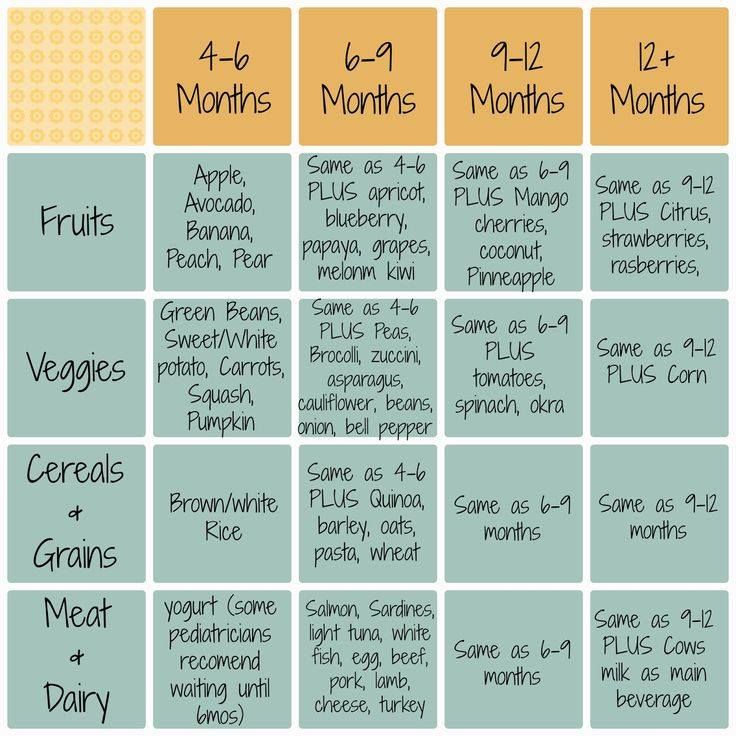 “Take it out of the oven and sprinkle with onion powder, diced chives, paprika, or whatever seasoning you like.”
“Take it out of the oven and sprinkle with onion powder, diced chives, paprika, or whatever seasoning you like.”
Viktor Kochetkov/Shutterstock
Veggies with sweet potato hummus
Beans and legumes are off-limits during your 30-day diet, so any Whole30 snacks, like hummus, have to be creative. Levine turned sweet potatoes into a creamy, naturally sweet hummus-like dip that can be used in as many places as the real deal. Levine serves her Sweet Potato Hummus with fresh vegetables like peppers, carrots, and peas. Try these other easy-to-make hummus recipes too.
Marian Weyo/Shutterstock
Grilled za-atar zucchini pops
Thomas Salamunovich, the owner of Larkspur Events & Dining, suggests you can turn a simple food like zucchini into a flavor-packed snack that will thrill and surprise your taste buds. Za-atar, a Middle Eastern herb and spice combo with thyme, sumac, sesame, and salt, is used frequently on proteins like chicken, but it elevates humble vegetables, too.
Dice a medium zucchini into one-inch pieces. Toss with 1 teaspoon of olive oil, and cook on a preheated grill pan or grill for 1 to 2 minutes, or until the zucchini is tender. Immediately sprinkle with za-atar, and serve for a sophisticated snack.
via drinkzupa.com
DNX Bar + Zupa Noma drinkable soup
If you’re traveling or just need something you can grab and go, Urban has two great options for you.
“Grass-fed beef bars from DNX Bar are a good mini-meal all by themselves,” Urban says. “But add a Medlie—I like their Green Gazpacho or Beet Orange Basil—and you’ve got hydration, plus micro-nutrition covered, too.”
JeniFoto/Shutterstock
Homemade roasted vegetable chips
Potato chips—and all junk foods for that matter—are off-limits during a Whole30 diet. Urban doesn’t like “chips” of any kind, even made Whole30-approved ingredients. But roasted root vegetables are salty, crispy, and can be oh-so-satisfying. You can make yours by thinly slicing vegetables like beets, sweet potatoes, turnips, or radishes. Toss the slices in a tiny bit of olive oil, and sprinkle with salt. Cover a rimmed baking sheet with the slices, being sure not to overlap. Cook at 400°F for 20 to 25 minutes until the chips are crispy and bubbly. Levine also roasts her own kale and Brussels sprouts. “The leaves get really crispy and delicious,” she says.
You can make yours by thinly slicing vegetables like beets, sweet potatoes, turnips, or radishes. Toss the slices in a tiny bit of olive oil, and sprinkle with salt. Cover a rimmed baking sheet with the slices, being sure not to overlap. Cook at 400°F for 20 to 25 minutes until the chips are crispy and bubbly. Levine also roasts her own kale and Brussels sprouts. “The leaves get really crispy and delicious,” she says.
Arno Jenkins/Shutterstock
Avocado-tomato salad
Whole30 snacks don’t have to be complicated. One of Levine’s favorite Whole30-approved mini meals is an avocado and tomato salad. Toss with a bit of olive oil—adding more healthy fats to the avocado—and sprinkle with sea salt and freshly-ground black pepper. The flavors are rich and simple, and the dish is easy to make when you have little time or few ingredients.
Elena Shashkina/Shutterstock
Peach-prosciutto roll-ups
Prosciutto, a thinly-sliced, cured pork product is Whole30 approved as long as the ingredients list is simply salt and pork. Anything added—like sugar—is a no-no. Use prosciutto to get the salt-heavy hit you love from bacon in a Whole30 snack. Wrap fresh peach wedges with prosciutto for a savory-sweet combo that you’re sure to crave every day. Don’t like peaches or can’t find them at your local store? Use melon or other fruits, like apples or pears. Levine also recommends wrapping asparagus spears with the salty meat.
Anything added—like sugar—is a no-no. Use prosciutto to get the salt-heavy hit you love from bacon in a Whole30 snack. Wrap fresh peach wedges with prosciutto for a savory-sweet combo that you’re sure to crave every day. Don’t like peaches or can’t find them at your local store? Use melon or other fruits, like apples or pears. Levine also recommends wrapping asparagus spears with the salty meat.
Lisa_Bauer/Shutterstock
Nuts with grapes or apple slices
Levine says a handful of mixed nuts is an easy Whole30 snacks option, but grab “only a small handful as they are calorically dense,” she says. Keep calories even lower by adding some grapes or apple slices, Hughes suggests. “I try to always pair fruit with a protein or healthy fat,” she says. “It keeps me more satisfied with longer-lasting energy.”
Chiociolla/Shutterstock
Nectarines, prosciutto, and greens
“This one sounds fancy, but it takes two minutes to slice a nectarine, add a leaf or two of arugula or baby spinach, and wrap in a slice of prosciutto,” Urban says. If you don’t like nectarines, you can use a peach, melon, or pear, she adds. “Make these ahead of time, and keep them in the office fridge in case meetings run long.”
If you don’t like nectarines, you can use a peach, melon, or pear, she adds. “Make these ahead of time, and keep them in the office fridge in case meetings run long.”
This happens to also be beautiful enough—and delicious enough—to use as an appetizer at a gathering.
Martha Graham/Shutterstock
Hard-boiled eggs or Deviled eggs
If you’re looking for Whole30 snacks, you’ll soon figure out that hard-boiled eggs are always a great way to go. “They’re easy, simple, and clean,” Hughes says. They also happen to be endlessly versatile. Hughes recommends serving them as is with some nuts or fruit slices. You can also mash up the yolk with a Whole30-approved mayonnaise, minced celery, and a hint of mustard powder for a spin on Deviled eggs. It’s even better with homemade olive-oil mayonnaise.
Alp Aksoy/Shutterstock
Tapenade with cut raw veggies
Tapenade is a classic spread made with briny olives, capers, and olive oils. It’s used extensively in Mediterranean foods, but it’s welcomed on the Whole30 diet because it’s a rich source of heart-healthy fats and a big boost of flavor. Levine serves her tapenade with cut raw veggies, like celery, carrots, and bell peppers. Tapenade would also be a great topper to a Whole30 hummus for an extra hit of tang.
It’s used extensively in Mediterranean foods, but it’s welcomed on the Whole30 diet because it’s a rich source of heart-healthy fats and a big boost of flavor. Levine serves her tapenade with cut raw veggies, like celery, carrots, and bell peppers. Tapenade would also be a great topper to a Whole30 hummus for an extra hit of tang.
Brent Hofacker/Shutterstock
Apples or carrot sticks with nut butter
“This one’s perfect for kids, and apples or carrots are more nutrient-dense than celery,” Urban says. “Choose a sugar-free nut butter to make it Whole30-compliant.” All nut butters—except peanut butter (peanuts are legumes)—are welcome on the Whole30 diet. Just be sure to read the label and avoid any that add sweeteners, even if it’s just honey. The only ingredients should be nuts and possibly salt.
julie deshaies/Shutterstock
Lettuce wraps
Roll up turkey, leaf lettuce, and homemade guacamole or salsa for a quick snack when you don’t have time to sit and eat a meal. These also make a great lunch with a side of roasted veggie chips. “You get lean protein, paired with veggies,” Hughes says. “Skip the processed condiments and go for the extra antioxidants from homemade salsa or guac.”
These also make a great lunch with a side of roasted veggie chips. “You get lean protein, paired with veggies,” Hughes says. “Skip the processed condiments and go for the extra antioxidants from homemade salsa or guac.”
etorres/Shutterstock
Avocado-tuna salad
Avocado is a creamy, heart-healthy alternative to mayo (though Whole30-compliant mayo does exist) in salads like tuna salad and egg salad. It’s a delicious way to boost your nutrients in quick, comforting Whole30 snacks.
Combine avocado with celery, red onion, and olive oil-packed tuna. (Drain the tuna first.) Add flavorful ingredients like lemon juice, olive oil, parsley, and of course salt and pepper. Stir until combined.
“This nutrient-dense snack has all the macronutrients in one to keep you full and happy. You won’t miss the mayo,” Hughes says. You can eat with veggies, or just down bites by the forkful. Don’t miss the powerhouse benefits of avocado.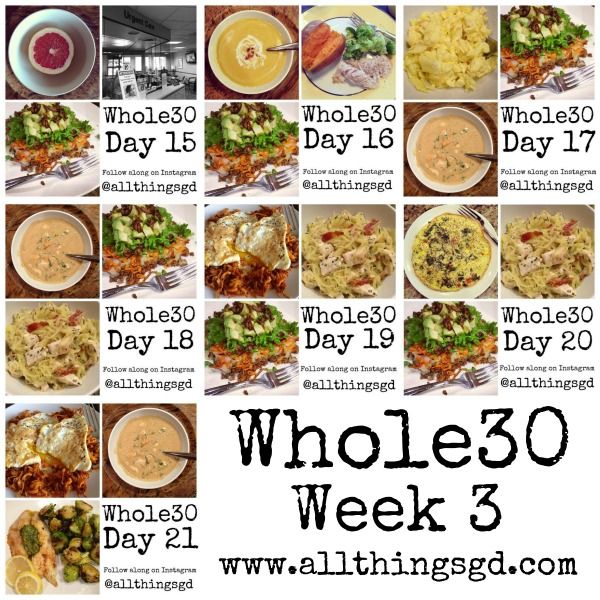
Photo and Vector/Shutterstock
Pesto dressing with cucumbers
Like tapenade, pesto is a flavorful condiment that can be used as a spread, dip, or topping. This one, however, is made from potent basil, pine nuts, olive oil, and salt—no cheese. You can use walnuts in place of pine nuts, and add a bit of lemon juice for an acidic bite. Don’t forget the salt and pepper, too.
Serve with veggies for a perfect Whole30 snack. “Veggies with dip doesn’t have to be unhealthy or boring,” Hughes says. “Pairing veggies with healthy fats helps your body absorb fat-soluble vitamins, too.”
PJjaruwan/Shutterstock
Bone broth
Whole30 dieters are big proponents of the rich broth that’s made by steeping bones and vegetables for hours. Bone broth can be used as a base for many dishes, but Levine recommends sipping on a warmed mug of bone broth as one of your Whole30 snacks. “Add some fresh chopped herbs for extra flavor,” she says.
“Add some fresh chopped herbs for extra flavor,” she says.
Can’t buy bone broth? Thanks to the surge in popularity of diets like Whole30, you can find the ingredients to make your own bone broth.
successo images/Shutterstock
Whole30-compliant jerky and baby food pouches
“This is the most portable snack food of all,” Urban says. “Plus, it’s a healthy protein, veggies, and fruit on the go. Try Beef Thins from The New Primal with a vegetable-focused pouch.” Be sure to read the label, however, or you risk picking up a pouch that’s not Whole30 compliant. “Make sure there are no oats, yogurt, or quinoa,” Hartwig adds.
Ready for a little diet inspiration? Check out how Whole30 helped this woman lose 36 pounds. Here are 62 of the best Whole30 recipes to get you started.
Sources
- Melissa Hartwig Urban, Founder of Whole30, Salt Lake City, UT.
- Haley Hughes, MS, RD, CDE.
 Dietitian, Greeley, CO.
Dietitian, Greeley, CO. - Lisa Levine, Healthy Living Coach, Seattle, WA.
- Thomas Salamunovich, Owner, Larkspur, Vail, CO.
Originally Published: October 17, 2019
Kimberly Holland
Kimberly Holland is a lifestyle writer and editor based in Birmingham, Alabama. When not organizing her books by color, Holland enjoys toying with new kitchen gadgets and feeding her friends all her cooking experiments.
Dairy kitchens - agulife.ru
29.11.2021
“And what will they give us for milk?” - one of the most popular questions that worries all moms and dads, and first of all it is asked by experienced friends and doctors in the clinic. The times when only infant formula and kefir were dispensed in dairy kitchens are long gone. This year, parents will be able to get whole food packages that include almost everything they need for a healthy diet for their little ones. This, of course, is milk, kefir and cottage cheese, as well as juices, fruit purees, canned meat and vegetables, milk and dairy-free cereals. It is important that all products are selected in accordance with the norms of a balanced diet for children from birth to 3 years. In 2017, Agusha baby food will again be served in Moscow dairy kitchens, where Wimm-Bill-Dann has been supplying its products for over 30 years. During this time, she has proven herself perfectly, and therefore the parents of the kids trust Agusha.
This, of course, is milk, kefir and cottage cheese, as well as juices, fruit purees, canned meat and vegetables, milk and dairy-free cereals. It is important that all products are selected in accordance with the norms of a balanced diet for children from birth to 3 years. In 2017, Agusha baby food will again be served in Moscow dairy kitchens, where Wimm-Bill-Dann has been supplying its products for over 30 years. During this time, she has proven herself perfectly, and therefore the parents of the kids trust Agusha.
Another important issue for all parents is the quality of baby food in dairy kitchens. There is no need to worry about this: Agusha products are made from selected milk from trusted Russian suppliers, fresh fruits and other natural ingredients. Their quality is strictly controlled at all stages of production. Agushi's quality control is guarded by modern technologies and equipment, and the recipe for each puree, juice or curd was developed by specialists with many years of experience in the field of baby food.
Many people think that obtaining products from a dairy kitchen is an incredibly difficult process. This is far from true. We will try to give exhaustive answers to the most common questions of parents.
Which categories of citizens receive free meals?
Citizens of the Russian Federation who are permanently registered in the capital and attached to a medical institution at the place of registration have the right to receive free baby food in Moscow.
- Children from 0 to 3 years old. For a baby under 6 months old, a prescription for dairy cuisine will be issued only if he is on mixed or artificial feeding.
- Breastfeeding mothers before the child reaches the age of 6 months. The transition to artificial or mixed feeding should be reported to the attending physician.
- Children from large families under 7 years old.
- Pregnant women.
- Disabled children under 18 years of age.
- Children under 15 suffering from chronic diseases.

How to apply for free baby food in Moscow?
You can prescribe products for a baby or a nursing mother at the clinic to which the child is attached. For these purposes, pregnant women should contact the antenatal clinic, also at the place of attachment. For the initial processing of documents for receiving baby food, you will need to write an application addressed to the head physician of the medical institution. Parents will also need to provide originals of the following documents:
- child's birth certificate;
- certificate of registration of the child at the place of residence;
- child compulsory medical insurance policy;
- passport of the parent or guardian;
- for large families - a certificate of a large family;
- for parents of a child with a disability or suffering from chronic diseases - relevant medical certificates.
Pregnant women provide a copy of their passport: the first page and the registration page.
What is the validity period for prescriptions for free baby food?
A prescription for baby food must be renewed regularly and is valid for 1 month, but may be issued for a longer period at the physician's discretion:
- for pregnant, lactating and children from 0 to 3 years - 3 months;
- for children from large families, children with disabilities, children with chronic diseases - 6 months.
These terms depend on how often, according to the doctor, the child needs repeated examinations. If a prescription is issued for a baby of the first month of life, in conclusion, the number of products for the remaining number of days is calculated, rounded up.
It is important to remember that when applying for a prescription before the 15th day of the calendar month, the conclusion can be issued for the current month, and after the 15th - for the next. And in fact, and in another case, in the dairy kitchen you can get the full amount of products.
How often do you need to go to the dairy kitchen for baby food?
In each dairy kitchen, the schedule for receiving products is separately approved by the doctor of the relevant medical organization. Usually perishable items such as liquid mix, kefir and cottage cheese are given out once or twice a week. Everything else can be received once a month in full.
Meals can be received not only by the legal representative, but also by any authorized person indicated in the special column of the application.
How do free baby food distribution points work?
Daily, seven days a week, from 6:30 a.m. to 12:00 p.m.
What is included in the assortment of baby food in dairy kitchens?
Dairy and sour-milk products, fruit juices, meat purees, milk and dairy-free cereals, fruit and vegetable purees - a total of about 40 items.
What Agusha products are presented in dairy kitchens?
Drinking milk "Agusha", fruit juices "Agusha", fruit and fruit and berry purees "Agusha", dry milk and dairy-free cereals from another manufacturer, vegetable purees from another manufacturer, meat purees "Agusha", meat and vegetable purees from another manufacturer, dry milk mixture of another manufacturer, fermented milk mixture "Agusha", children's cottage cheese "Agusha", drinking kefir "Agusha".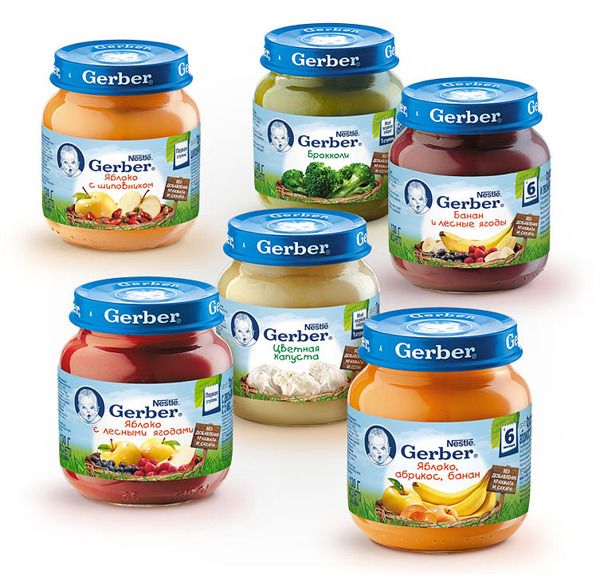
Useful children's menu from Yulia Vysotskaya
food
January 20, 2017, 2:00 pm
Tasteful and useful: children Julia Vysotskaya's recipes
Vysotskaya Life ∙ Administrator,
Moscow
January 20, 2017, 14:32
Balanced baby food is a whole science that every mother learns from her own experience. Here, as nowhere else, it is important to be able to combine tasty and healthy. A real master in this matter is Yulia Vysotskaya, who today shares valuable tips and proprietary recipes.
Profile
Workshops 414
Articles 1296
Video blog 47
Write
Porridge number one
A child's diet should include as many different cereals as possible.
Julia Vysotskaya
“But oatmeal is best for a child's stomach. Only not instant flakes, but real oatmeal. It’s just great to add fruits and berries to this porridge.”
Just such a recipe for porridge for children, we bring to your attention. Grind 30 g of oatmeal in a coffee grinder and gradually pour 60–80 ml of boiling water into a small saucepan. Stirring constantly, cook the mixture over low heat for 5 minutes. Blend a handful of seedless grapes in a blender and rub through a sieve to remove any remaining skin. Mix the finished oatmeal with berry puree or lay them in layers in a bowl.
Grind 30 g of oatmeal in a coffee grinder and gradually pour 60–80 ml of boiling water into a small saucepan. Stirring constantly, cook the mixture over low heat for 5 minutes. Blend a handful of seedless grapes in a blender and rub through a sieve to remove any remaining skin. Mix the finished oatmeal with berry puree or lay them in layers in a bowl.
This healthy treat can be given to babies from 9 months. For older children, you can replace the grapes with a crushed sweet apple or add dried apricots and a little honey and cinnamon to the porridge.
Tenderness casserole
“Even the most delicious porridge can get boring,” recalls Yulia Vysotskaya. “Then you can alternate it with cheesecakes, casseroles, lazy dumplings or even pancakes.”
The collection of the popular TV presenter has a suitable casserole recipe for a child. Combine 150 ml of low-fat cream with 0.5 tsp. vanilla extract and 110 g butter, melt over low heat. Separately, beat 3 eggs with 120 g of sugar into a light mass and mix with 150 g of flour. Slowly pour in the cream with butter, knead the liquid dough. Grease a ceramic dish with oil, sprinkle with sugar and spread the apple slices. Fill them with dough, sprinkle 300 g of blackberries on top and bake for 30 minutes in the oven at 180 ° C. Instead of blackberries, you can take any berries. The main thing is that they are not too sour and the child likes them. Also, take a look at the Eat at Home website - there you will find recipes for casseroles for children with photos for every taste.
Slowly pour in the cream with butter, knead the liquid dough. Grease a ceramic dish with oil, sprinkle with sugar and spread the apple slices. Fill them with dough, sprinkle 300 g of blackberries on top and bake for 30 minutes in the oven at 180 ° C. Instead of blackberries, you can take any berries. The main thing is that they are not too sour and the child likes them. Also, take a look at the Eat at Home website - there you will find recipes for casseroles for children with photos for every taste.
Fish and meat
Yulia Vysotskaya
“After a year old, a baby can be offered meatballs, meatballs, steam cutlets and meat soufflé. When you see that the child confidently copes with cutlets and meatballs, you can cook stew for him.
Similarly, the baby is introduced to the fish. From the age of seven, you can cook salads and canned tuna sandwiches for him. For picky eaters in the children's menu from Yulia Vysotskaya there is a recipe for fish meatballs.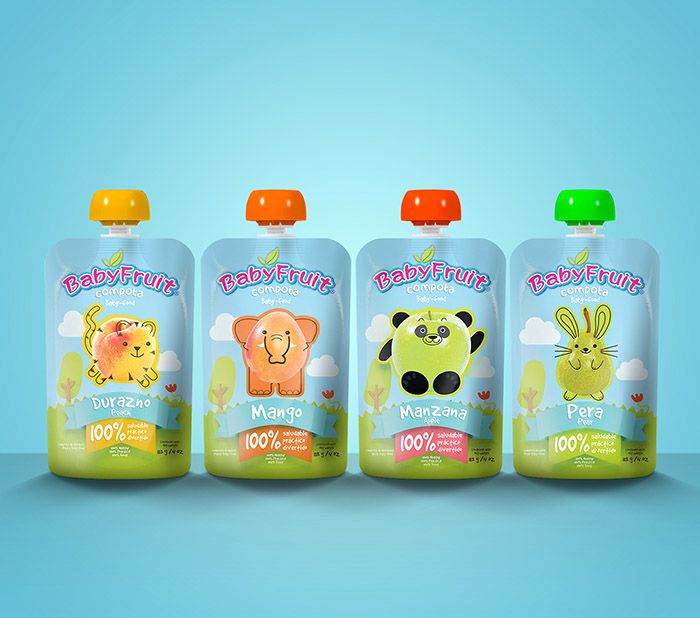 Mash 600 g potatoes, 20 g butter, chopped parsley and a pinch of salt. Mash 180 g of tuna with a fork and mix with 200 g of corn into the puree. Form cutlets in the form of fish, roll in flour and fry until golden brown.
Mash 600 g potatoes, 20 g butter, chopped parsley and a pinch of salt. Mash 180 g of tuna with a fork and mix with 200 g of corn into the puree. Form cutlets in the form of fish, roll in flour and fry until golden brown.
Tuna is a rich source of omega-3 acids, which are so important for children. They contribute to the full physical development and improve brain function. By the way, this dish is useful for hyperactive children who have difficulty concentrating.
Soup Wisdom
Soups should be on the children's menu every day. Since they contain different vegetables, meat, cereals, vermicelli, they are perfectly balanced in terms of nutrients and are of great benefit. If a child stubbornly ignores regular soups, cook pureed soups for him.
This soup recipe for children is ideal for a winter menu. Chop the onion and simmer in a heavy bottomed saucepan until translucent. Pour 600 g of pumpkin into cubes, hold on fire for a couple of minutes, pour in vegetable broth and cook until tender.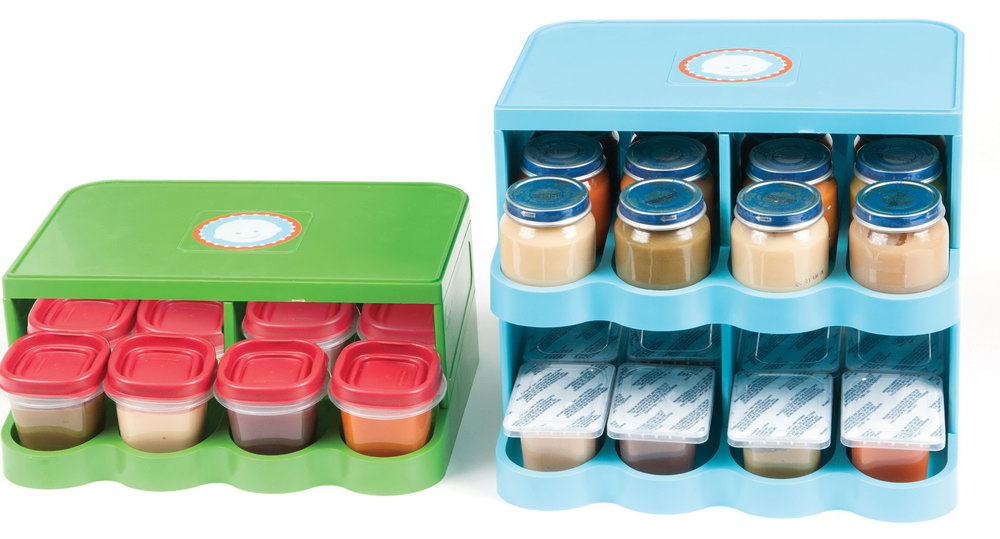 Then cool the soup, add 0.5 tsp. orange zest, a bunch of chopped cilantro and beat everything in a blender. Serve pumpkin soup with sour cream, decorating the plate with green petals.
Then cool the soup, add 0.5 tsp. orange zest, a bunch of chopped cilantro and beat everything in a blender. Serve pumpkin soup with sour cream, decorating the plate with green petals.
Yuliya Vysotskaya
“It is good to use parsley, basil, cilantro, dill, thyme, oregano, thyme, rosemary, and green onions for children's dishes – they all have invaluable useful properties.”
The right muffins
“Of course kids want something tasty. Why not treat them to some homemade cakes? And you can make flour yourself, say, from millet, - Yulia Vysotskaya recommends. “Ordinary millet is bought, washed, dried, and then ground in a coffee grinder and sifted through a sieve.”
There are also a lot of recipes for baking from ordinary flour that are healthy for children. We mix 300 ml of milk, 120 ml of sunflower oil, 50 g of oatmeal, 0.5 tsp. vanilla extract. After 10 minutes, add 100 g of sugar and 225 g of wheat flour with baking powder and a pinch of salt.


